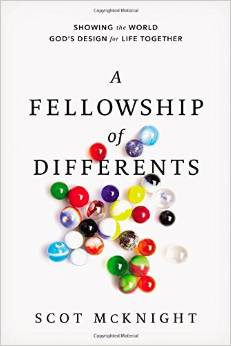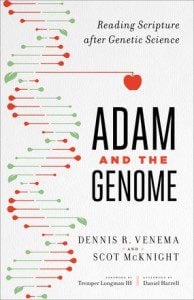 I’m in Portland today speaking at the ReGeneration conference with my good friend Dan Kimball.
I’m in Portland today speaking at the ReGeneration conference with my good friend Dan Kimball.
Murray Watson’s helpful perspective on how major religions read their own “texts of terror”:
In a column for Salon earlier this month, “Faith-fueled forces of hatred: Obama’s religion speech was troubling — but not for the reasons the right alleges,” Jeffrey Tayler suggested that the real problem with the religious extremism which increasingly confronts us lies deeper than merely the heinous actions we have witnessed. Rather, Tayler argues, it is inscribed in the very sacred texts of the world’s largest religious traditions. “We should not ascribe vile behavior to misreadings of the canon,” the argument goes, because that sense of hatred and violence is actually at the heart of religions like Judaism, Christianity and Islam — whose scriptures include some admittedly stomach-turning passages.
As a Biblical scholar, however, I beg to disagree with this analysis, which seems like an oversimplification of the situation, and a forced dichotomy where other options exist.
There is no denying that Judaism, Christianity and Islam contain in their sacred books verses and chapters that are distasteful, awkward, unpleasant, and (especially from our modern point-of-view) morally dubious. Not only scholars of religion, but all those who attempt to take those scriptures seriously, are forced to grapple with those issues.
While the heightened attention to the destructive potential of these texts is perhaps new, discomfort with many of these passages is not, and each of these faiths has significant interpretive traditions which face these difficulties head-on, in many cases managing to neutralize or tame them, so to speak, through symbolism, allegory, contextualization or similar approaches. With the exception of the most die-hard fundamentalist readers (who insist on a strictly literal reading, with no room for interpreters to “remediate” such difficulties), each of the three monotheisms offers credible and creative ways to address these texts thoughtfully, respectfully and effectively.
They do this because, at least in their classic forms, none of those three traditions consider themselves empowered to radically edit their canonical literature. Being unable to jettison words that previous generations judged to be inspired, the next best option is finding appropriate ways to de-fang these “texts of terror,” as scholar Phyllis Trible has aptly called them.
Michael Patton’s seven things not to say to a depressed person.
Obesity, the world, children, the USA (see the graph at WaPo):
A new comprehensive study published in The Lancet looks at the state of obesity around the world, and shares several grim observations, including that no country has managed to curb its obesity epidemic. It also looks specifically at the prevalence of child and adolescent obesity, which has risen significantly around the globe in a matter of “less than one generation.” That troubling ascent can be seen in the chart above, which shows the rising percentage of children who are overweight or obese in 9 distinct countries around the world.
The United States, as is often the case when addressing obesity, is the country that stands out. There is good news in America: Children in the United States, after all, are less likely to be overweight today than they were in the mid 2000s. But there is also bad news: American kids are still far more likely to be overweight than kids in most other countries. Much of that damage has been done over the past thirty years, during which the average weight of an American child has risen by more than 11 pounds, according to the researchers.
Someone caught a catfish this big in Italy’s Po River?
An admissions counselor’s advice to parents — good advice it is, indeed.
“… you need to assume, right now, that your child is not getting into Harvard no matter what he or she does. (And no, he’s not getting into Stanford either, or Yale, or Dartmouth, or MIT. Probably not UC Berkeley, either. No, I’m not kidding.) Your kid isn’t getting into the college you think he or she is.
What? So-and-so’s child is at Princeton right now? And got what on his SATs? And did those activities? Hmmm. Interesting. Sure, you can prove me wrong with some examples. And I can prove myself right with a hundred more. Stanford’s rate of admission was below 5 percent last year. Do the math.”
John Entine’s sketch of a renewed piece of quackery:
It’s particularly troublesome when a scientist—in this case, an Israeli molecular geneticist whose motivations appear more personal and ideological than scientific—stokes the contretemps. The current brouhaha arises over a recent study by Eran Elhaik and is accompanied by his personal attacks on more mainstream scientists who have eviscerated his work. In the face of overwhelming evidence from dozens of studies over twenty years from geneticists and historians around the world, Elhaik is aggressively stumping on behalf of his belief that most Jews trace their seminal ancestry not to the Middle East but to the Caucuses and Eastern Europe.
Elhaik, who is now a post-doctoral researcher at Johns Hopkins, is recirculating the debunked “Khazarian hypothesis” promoted by journalist Arthur Koestler in his 1976 book, The Thirteenth Tribe, written before scientists had the tools to compare genomes and challenge his conclusion.
Twelve invasive species in the USA:
For some animals, there’s no such thing as a dog-eat-dog world. They rule.
Animals from around the world that stow away in airplanes, ships and the luggage of some smuggler become almost bulletproof when they make their way into the American wilderness as invasive species. Why? They’re new here, and they don’t have predators to keep them in check. Animals that should be afraid of a vicious predator aren’t. Invasive species eat like kings.
Living high on the hog, these marauders aren’t going anywhere. Unlike many native animals that are disappearing from North America — vaquita porpoises, monarch butterflies, bottlenose dolphin and such — invasive species are growing faster than wildlife and game officials can manage them. In many cases, authorities have given up any hope of eradicating them.
Here are 12 of the most destructive invasive plants and animals in the United States, a dirty dozen. If it’s on this list, there’s a good chance that a government official in an office somewhere is trying to think of ways to kill it.
Bill Walton, by Richard Deitsch:
“We are six years and eight days from that life-changing day,” Walton said last week. “Everything is relative. I am 62 years old. I have had 37 orthopaedic operations but I am pain-free, and I take no medication. It is a miracle what has happened to me in my life. I am as happy as I can be, healthy as I can be. I have a great and growing family [Walton has four children and three grandchildren and met his second wife, Lori, at a party organized by the Grateful Dead], and business is tremendous.”
Broadcasting is better with him in it and his ESPN work with the endlessly patient Dave Pasch (see thoughts from him in item No. 2 below) has become a late-night treat for those of us on the East Coast and prime-time fun for West Coast basketball fans. Sure, Walton has polarizing, often ridiculous opinions, and there’s no doubt he plays crazy for intentional notice, but he’s a distinctive, fun voice in college basketball. Interviewing him is an amusing challenge given he travels to places that often have nothing to do with the query. Below, a conversation with the world’s tallest Deadhead:
Digital natives like the printed page:
Frank Schembari loves books — printed books. He loves how they smell. He loves scribbling in the margins, underlining interesting sentences, folding a page corner to mark his place.
Schembari is not a retiree who sips tea at Politics and Prose or some other bookstore. He is 20, a junior at American University, and paging through a thick history of Israel between classes, he is evidence of a peculiar irony of the Internet age: Digital natives prefer reading in print.
“I like the feeling of it,” Schembari said, reading under natural light in a campus atrium, his smartphone next to him. “I like holding it. It’s not going off. It’s not making sounds.”…
Earlier this month, Baron published “Words Onscreen: The Fate of Reading in a Digital World,” a book (hardcover and electronic) that examines university students’ preferences for print and explains the science of why dead-tree versions are often superior to digital. Readers tend to skim on screens, distraction is inevitable and comprehension suffers.












